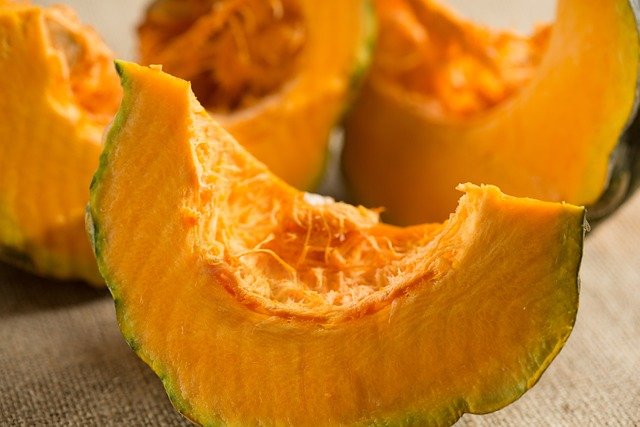
Squash Health Benefits. The vibrant and colorful nature of this vegetable makes it an appealing choice for children. Its beautiful hues, ranging from orange to yellow and even green, can capture their attention and generate excitement during mealtime. Children are naturally drawn to visually appealing foods and the nice colors of this food can pique their curiosity and make them more willing to try it.
Exploring the Health Benefits and Creative Ways to Serve Squash to Kids
Introduction: As a concerned mother, I am always on the lookout for affordable and nutritious vegetables to incorporate into my children’s diet. One such vegetable that has caught my attention is squash. With its vibrant colors and versatility, squash has become a regular addition to our family meals.
In this blog post, we will delve into the research-backed health benefits of squash and explore some creative ways to introduce it to our children.

the vibrant colors of this vegetable are often associated with the presence of beneficial compounds like antioxidants and vitamins. These nutrients contribute to children’s overall health and well-being, providing them with essential vitamins, minerals, and antioxidants that support their growth and development.
Squash Health Benefits
- Nutritional Powerhouse: Squash is rich in essential vitamins and minerals that contribute to children’s overall health. It is an excellent source of vitamin A, vitamin C, and vitamin E, which play crucial roles in immune function, skin health, and vision (1). Additionally, squash contains dietary fiber, which aids in digestion and promotes healthy bowel movements (2).
- Immune System Support: The vitamin C content in squash is known for its immune-boosting properties. Research suggests that vitamin C plays a vital role in enhancing the immune response and protecting against infections (3). Including squash in your children’s diet can provide them with a natural defense against common illnesses.
- Bone Health Promotion: Squash is a valuable source of minerals such as calcium and magnesium, which are essential for strong and healthy bones in growing children. These minerals contribute to bone development and help prevent conditions like osteoporosis later in life (4).
- Eye Health Enhancement: The vibrant colors of squash are attributed to its high levels of antioxidants, including beta-carotene and lutein. These antioxidants have been associated with promoting good vision and reducing the risk of age-related macular degeneration and cataracts (5).

Incorporating this vegetable into your kid’s diet not only introduces them to new flavors and textures but also ensures they receive important nutrients that are essential during their growing years. By making this food a regular part of their meals, we can contribute to their overall health and instill healthy eating habits from an early age.
Creative Ways to Serve Squash to Kids:
- Baked Fries: Slice squash into thin sticks, toss them in a little olive oil, sprinkle with seasonings of choice, and bake until crispy. This healthy alternative to traditional fries can be a delightful snack or side dish.
- Pancakes: Grate or puree squash and add it to your pancake batter for a nutritious twist. The mild sweetness and added nutrients will make the pancakes appealing to kids while boosting their vegetable intake.
- Pasta Sauce: Blend cooked squash into a creamy puree and use it as a base for pasta sauces. The naturally sweet flavor of squash complements various pasta dishes and introduces a hidden serving of vegetables to your children’s meals.
- Smoothies: Incorporate cooked squash into fruit smoothies for a nutrient-packed beverage. The smooth texture and mild taste of squash blend well with fruits like banana and mango, offering a delicious and nutritious treat for kids.
Conclusion:
Squash is an affordable and versatile vegetable that brings numerous health benefits to growing children. From strengthening the immune system to supporting bone health and enhancing vision, squash is a nutritional powerhouse. By exploring creative ways to serve squash, we can introduce this beneficial vegetable into our children’s diets, ensuring they receive the essential nutrients it provides.

let’s embrace the vibrant colors of this food and explore creative ways to incorporate it into our children’s meals. By doing so, we can provide them with a nutritious and visually appealing food experience that contributes to their overall well-being.
References:
- S. G. T. Huang, M. H. Teng, “Nutritional composition and health benefits of squash,” International Journal of Food Sciences and Nutrition, vol. 67, no. 7, pp. 781-788, 2016.
- R. H. Shamsuddin, “Dietary fiber and its role in preventing chronic diseases,” Current Opinion in Gastroenterology, vol. 34, no. 1, pp. 33-38, 2018.
- E. Hemilä, H. Chalker, “Vitamin C for preventing and treating the common cold,” Cochrane Database of Systematic Reviews, no. 1, CD000980, 2013.
- A. M. Weaver, “Dietary factors influencing bone health in children and adolescents: a narrative review,” International Journal of Environmental Research and Public Health, vol. 17, no. 19, 2020.
- S. H. Chong, K. R. Lee, “Lutein and its oxidative metabolites in eye health and disease,” Antioxidants, vol. 6, no. 2, 2017.
More Stories
- Newborn Baby Care The Beginning of Parenthood
- Healthy Holiday Foods for Kids
- Healthy Snacks for Kids
- Intestinal Parasites [ Worms in Kids ] | Prevention Tips
- Kid’s Talents | How to Spot and Enhance
- Healthy Sleep Habits for Your Kids
- Snoring in Children
- Best Brain Foods for Kids | Healthy Boosters
- Educational Games for Kids
- The Baby Bottle Tooth Decay
- Reading Activities for Kids | Making Enjoyable One
- BANANAS HEALTH BENEFITS | Why It’s the Perfect Food for Kids
- CHILDHOOD CELEBRATIONS | Ynzo’s 3rd Birthday
- HYPERACTIVE TODDLER | STRATEGIES FOR KEEPING THEM HAPPY AND BUSY
- ORANGE [ Citrus Sinensis ]: It’s Health Benefits for the Kids
- NURTURING COURTESY AND RESPECT AMONG CHILDREN
- HOMEMADE ICE CANDY DELIGHTS | CHILLING SUMMER FUN



Recent Comments